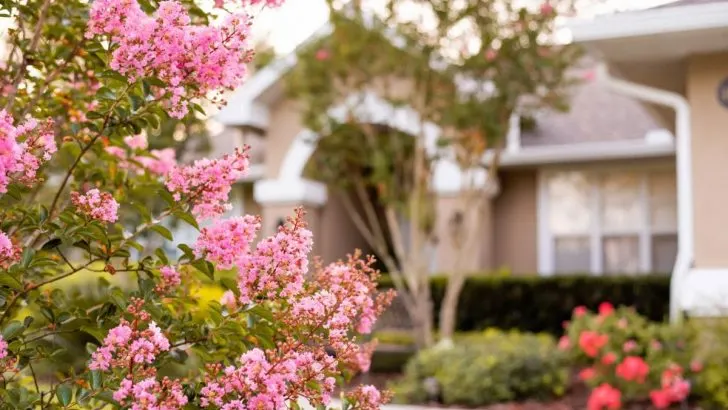If you live in Florida, you’ll probably want to plant some Florida native plants in your garden. In this article, we bring you the care guide for Florida native plants.
Even if you’re not living here, these plants will fit in any tropical region and climate well. What you’ll need is an enthusiastic green thumb, much will and love, and probably lots of sun and sandy soils.
In case you don’t want a typical plant such as Magnolia tree Florida, butterfly bush Florida, south Florida butterfly plants or Florida oak trees in your garden, choose some of these below. But don’t forget about many types of palm trees in Florida, small flowering trees in Florida and Florida vines that could also be a good fit in your yard.
Let’s find out the care guide and botanical features of these native Florida plants.
What Plants Are Only Found In Florida?
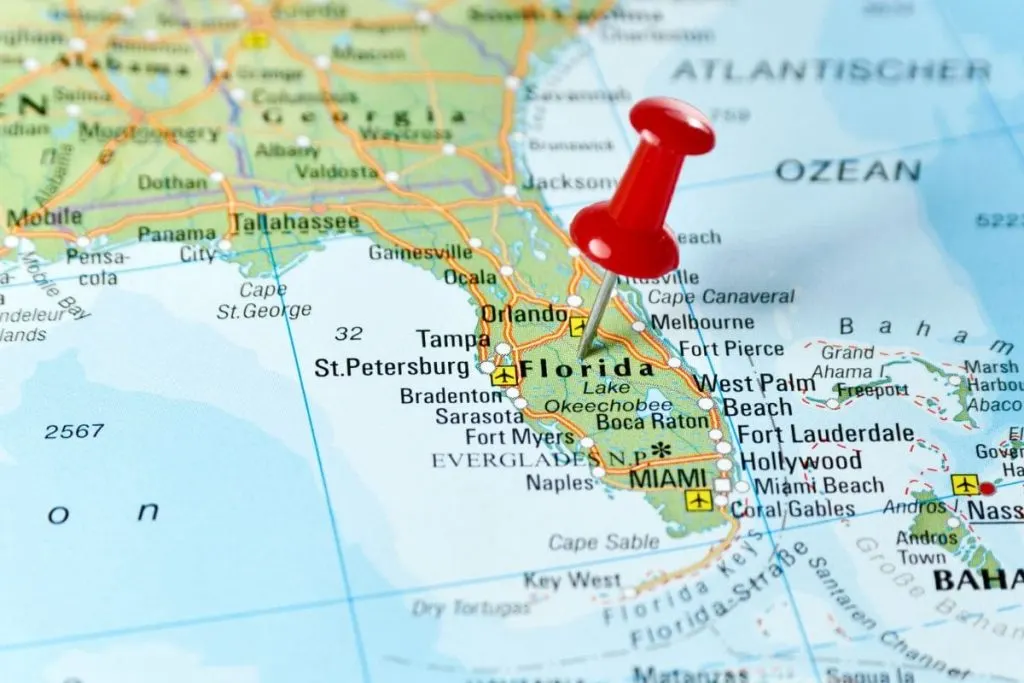
Even though most plants that grow in one tropical region, grow in another one too, that’s not the case with all plants. There are plants native to Florida that only grow and thrive well in this region.
Those plants are beach sunflowers, blanket flowers, milkweed, coral honeysuckle, coral bean, and columbine plant.
Among these plants, Florida pines, Chickasaw plum tree, blanket flower, Florida maple, and Florida cypress trees also grow only in this region.
9 Florida Native Plants (South Florida, North, And Central Florida Special Flowers)
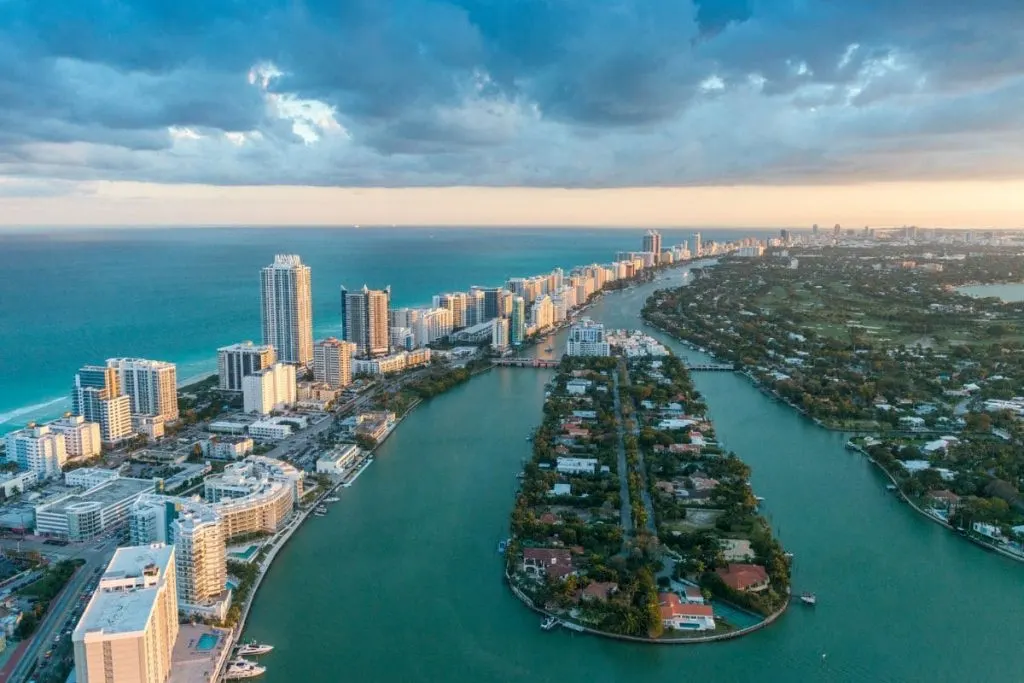
Do you live in Florida but are not sure what plants do best here? Does it seem to you that not all the plants you plant are blooming at their best?
What could be wrong then? Maybe the simple plants you choose are mostly plants intended for other regions.
Each region has its own special plants that grow best there. That’s exactly why we’re bringing you 9 Florida native plants today.
So that from now on all the plants you plant will bloom and grow perfectly in your garden, let’s take a look at them. For each of them, we bring you botanical characteristics as well as a care guide.
1. Muhly Grass
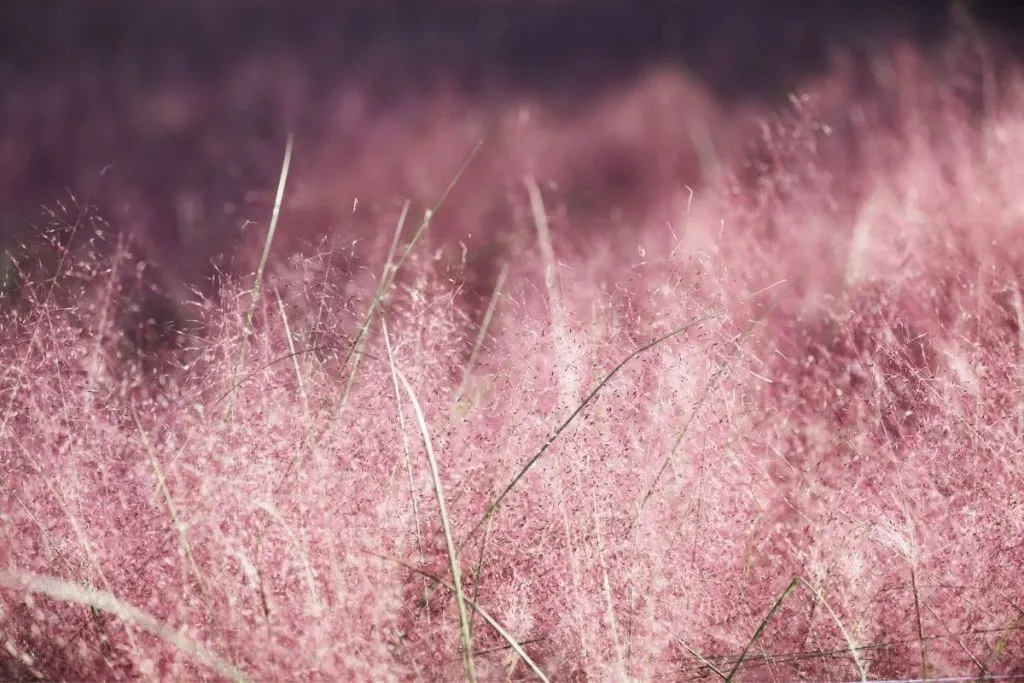
Muhly grass is one of the most popular native Florida plants. These plants attract butterflies and with their perfect lavender color, you’ll have a garden full of life. They are part of the group of fuzzy flowers.
They are most common in North Florida. Some say that the seeds of this plant make them edible plants while some say it’s toxic. If you’re not too curious, I would rather avoid it. Muhly grass is one of the semi-evergreen plants.
Light Conditions
Muhly grass is a native plant from this region. Precisely because of this, its growing conditions are used to strong sun.
For the best success of this plant, it needs to be planted in a location with full sun in the morning or afternoon, and very little shade.
We suggest giving it at least 6-7 hours of sun. It will never grow in the shade, especially if you just plant it in the shade or transplant it there.
Water Needs
The watering needs of this plant are also not complicated. It belongs to drought-tolerant plants and you won’t have to worry about whether you skipped watering. Feel free to go on vacation for 10-12 days.
Your plant will be unchanged when you return. Of course, you won’t make up for stocking up with a double dose of water then. You will only water it once in the normal amount.
Soil Type
The plant can grow in several types of soil, but the best for it is completely sandy soil. You can also add perlite or peat soil to the sand if you like. Stick to the choice of these three soils and you won’t go wrong.
Fertilizer
It is not necessary to fertilize this plant. But if you still want it for better-guaranteed success, make it a 10-10-10 fertilizer. Do this before planting or in early spring, never in autumn or winter.
Pruning And Propagation
Pruning is necessary when you notice damage to this plant. These are mostly yellow ends due to excessive heat. Trim them with sharp swords. In addition, circumcision is not necessary.
It is propagated and planted by seeds, and this is proven to be the most effective propagation process. Soak the seeds in water for at least 10-12 hours before planting.
2. Southern Wax Myrtle
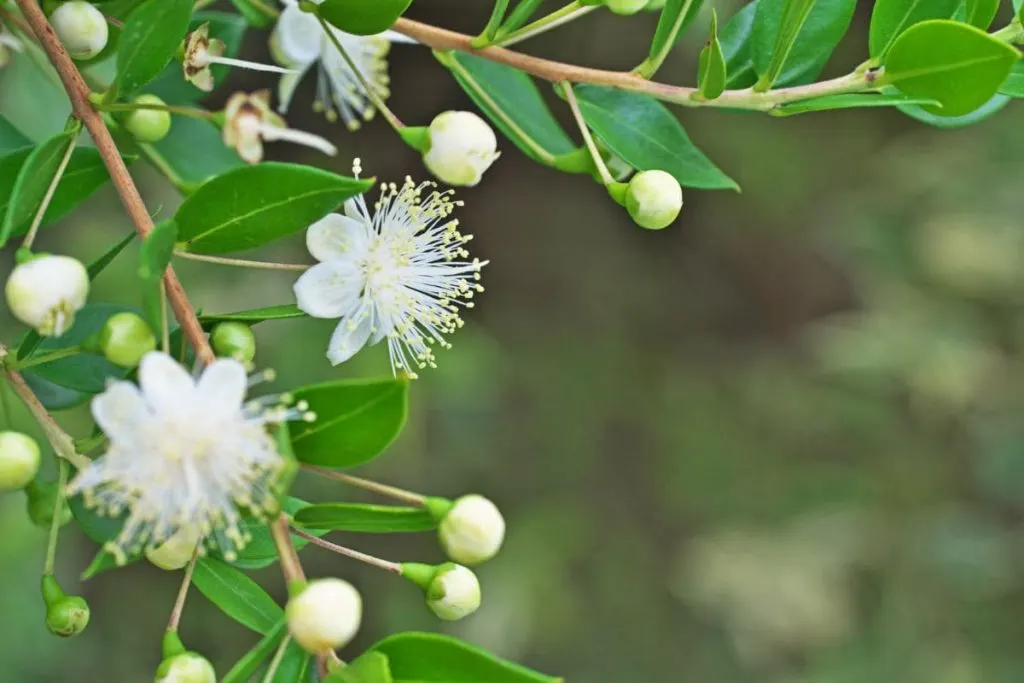
What starts off as a white flower plant, blooms into a shade tree with bright purple fruits and flowers. It is one of the best native plants in this part of the USA.
It is a great ornamental plant and its flowers bloom early in the spring. Its dark green evergreen foliage will be your favorite plant in the garden. Myrtle is one of the popular flowering trees in Texas too.
This myrtle tree demands partial shade and full sun in the morning. It is one of many native plants that’s attracting butterflies.
Southern myrtle can be great as the accent plant in your yard too. The plant’s common name is wild coffee.
Light Conditions
This tree will be extremely grateful if you plant it behind the house where it will receive 3-4 hours of direct morning sun.
In the afternoon, it will have partial shade and plenty of light. These are the perfect light conditions for your myrtle tree.
Water Needs
Watering is very simple. This beautiful tree can be up to 2 tablespoons without water. During the flowering period, however, we recommend that you increase watering to every 7-8 days. In this way, you are sure to have beautiful flowers in the spring.
Soil Type
This tree is not picky at all when it comes to soil. You can plant it in any type of soil except very acidic soil and it will grow.
We recommend perlite, peat moss, sandy soils, clay, or whatever you can find, as long as you balance the acidity of the soil.
Fertilizer
It is not necessary to fertilize the tree, i.e. fertilization is not mandatory. If you really want to, do it in early spring or early summer. It should be a 15-15-10 fertilizer. You can also use animal manure if you want.
Pruning And Propagation
We recommend pruning this tree after the flowering season. Prune it then in late autumn or early spring. This way you will ensure safe and successful growth and flowering in the coming year.
It is propagated by cuttings or seeds. Both methods are very successful. It is your personal choice which one you will apply and which one is easier and more pleasant for you personally.
3. Native Yucca Species
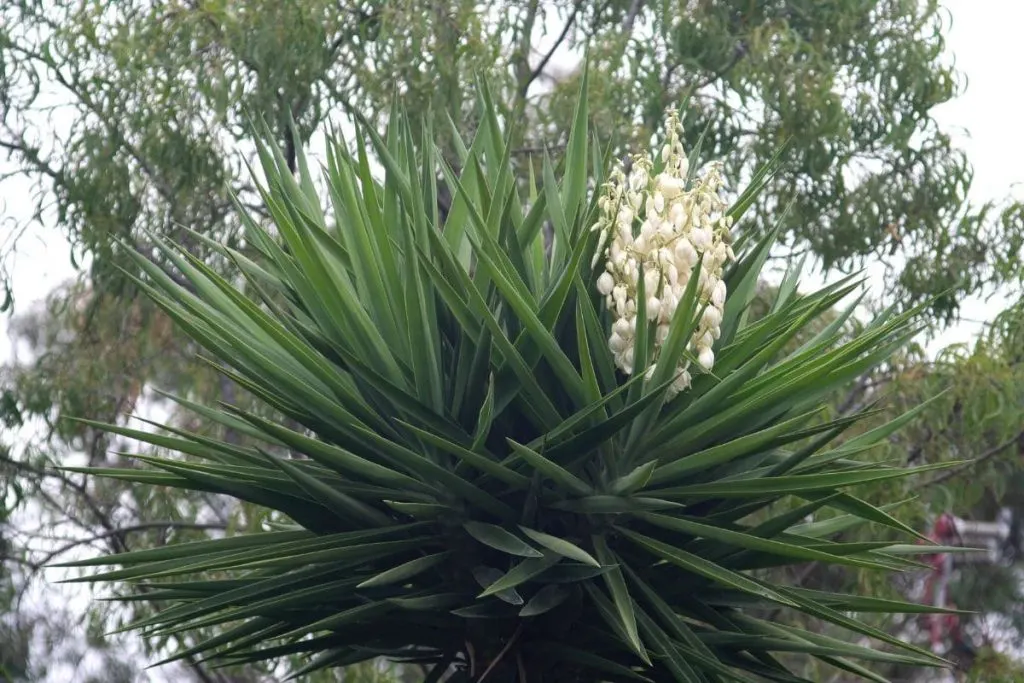
Yucca plant is today the national flower of El Salvador. If you want a butterfly garden, definitely decide to choose these bright green leaves with white flowers then.
It’s among the native species of Florida. It’s been a part of this region for centuries now. Yucca plants have trumpet-shaped yellow flowers (pale yellow to white).
Yucca’s flowers bloom in the early summer time, but sometimes in the spring too if the conditions are flattering. Unfortunately, it is now one of the threatened species.
However, they demand low maintenance and they are mostly used as landscape plants and border plants. Yucca flowers are also bird species plants which means they are a host plant for hummingbirds and many other birds.
Light Conditions
Although you’ll probably see it in sunny positions in gardens, that doesn’t mean it should always be in the sun.
This plant grows best with 4-5 hours of morning sun and quite a bit of light in the afternoon. It will not grow in shady areas, i.e. it will have slow growth.
Water Needs
The watering process should be applied every 7 days, tap water or rainwater, it doesn’t matter. It is not a very drought-tolerant plant.
If you’re going on vacation, hire a friend or neighbor to do it for you. When it comes to suitable soil, yucca plants like regular potting soil.
Soil Type
You don’t have to invent special conditions for this plant because it will manage and grow even in the most ordinary soil. However, it does not like very acidic soils.
Fertilizer
The best fertilizer is dynamic lifter organic plant food. Instead of this, you can try similar organic foods, but don’t deviate too much from those two choices.
Pruning And Propagation
Except in cases of damage, pruning is not necessary at all for this plant. Propagation is easy by using semi-cuttings or seeds. You choose the easier and faster way for you.
4. Passion Flower
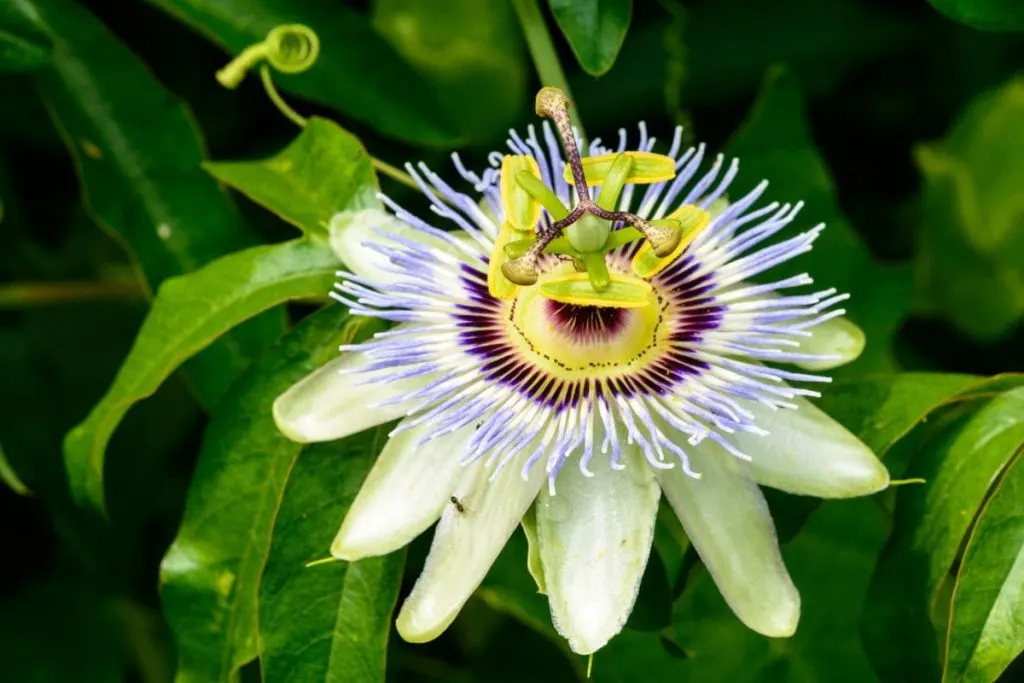
Passionflower is among the flowers for cancer. This goes to its amazing symbolism and appearance. The white, blue, and purple flower attract rare Atala butterfly. If you plant it along ornamental grass, you’ll have the most amazing garden in the neighborhood.
Among butterflies, these flowers attract birds too. Even though they look amazing and it might seem there’s a lot of work around them…Surprise, they are among the low-maintenance plants in Florida. They grow the best in tropical climates.
Light Conditions
The passion flower seems like a very fragile flower, but it is by no means that. You don’t have to worry about these flowers wilting after a long time in the sun.
Give him plenty of morning sun and afternoon shade to rest. It will grow excellently in such conditions.
Water Needs
Watering should be practiced every 7 days. You should have a regularly based watering schedule. It doesn’t matter what type of water you use as long as the soil is well-drained.
Soil Type
It can grow in any type of soil, although we recommend a combination of perlite and sandy soil. In such well-drained soil, it will grow without any problems!
Fertilizer
Find a 1:1 ratio of nitrogen and potassium fertilizer for this plant. If you can’t find it, animal manure can be a good alternative, but only that. Do not deviate from these options.
Pruning And Propagation
Pruning is not necessary except in cases of yellow leaves or other damage. Propagation is done using cuttings and seeds. A much easier and more successful way is seeds.
5. Fakahatchee Grass
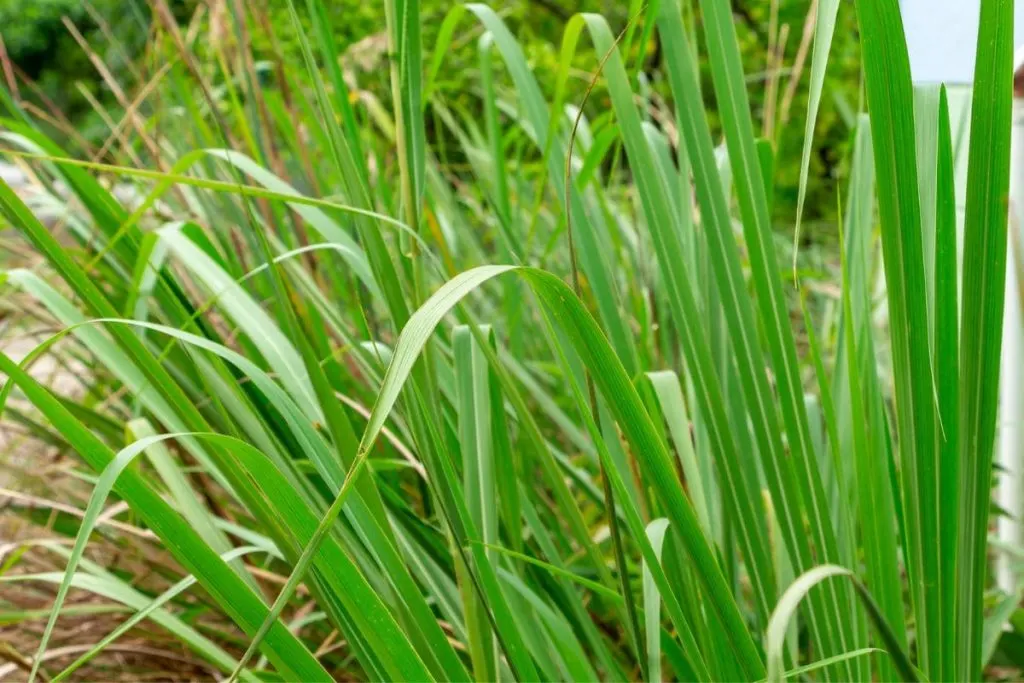
Fakahatchee grass is a plant very similar to muhly grass. The difference between them is the Family they belong to and their height. Fakahatchee grass grows lover than the muhly grass.
However, if you need an amazing green plant that you can use as the border plant, choose this grass. It will add that much-needed texture that your garden’s lacking. It is a drought-tolerant plant. We advise you to plant them near the coral bean plant.
They opposite looking and they’ll make such a nice view in your garden. Planting them near other plants should be checked before doing so. They are unfortunately not among butterfly species.
Light Conditions
This grass can grow in a location where there is sun all day. Given that it is an excellent border plant and ground cover plant, it will not be harmed by a lot of sun.
Maybe only the top of this plant will turn yellow due to stamens, but this will not hinder its further growth.
Water Needs
The watering schedule should be regular. Water it in the morning before it comes out to the sun, only the soil around the plant, every 7-8 days.
The plant is drought tolerant, but only for 3-4 days over its normal watering schedule. Otherwise, it will start to lose its posture.
Soil Type
Plant it in any type of soil that is not too heavy. Such soils hinder their progress and growth right from the start. Soils with pH values between 5-5 and 6.5 suit her best.
Fertilizer
It is not necessary to fertilize this plant at all.
Pruning And Propagation
Pruning is done at times when damage has occurred to this plant. Trim only the tips with a sharp knife or scissors. If the plant does get the shape you don’t want, you can prune it even then. It is propagated by seeds.
6. Southern Shield Fern
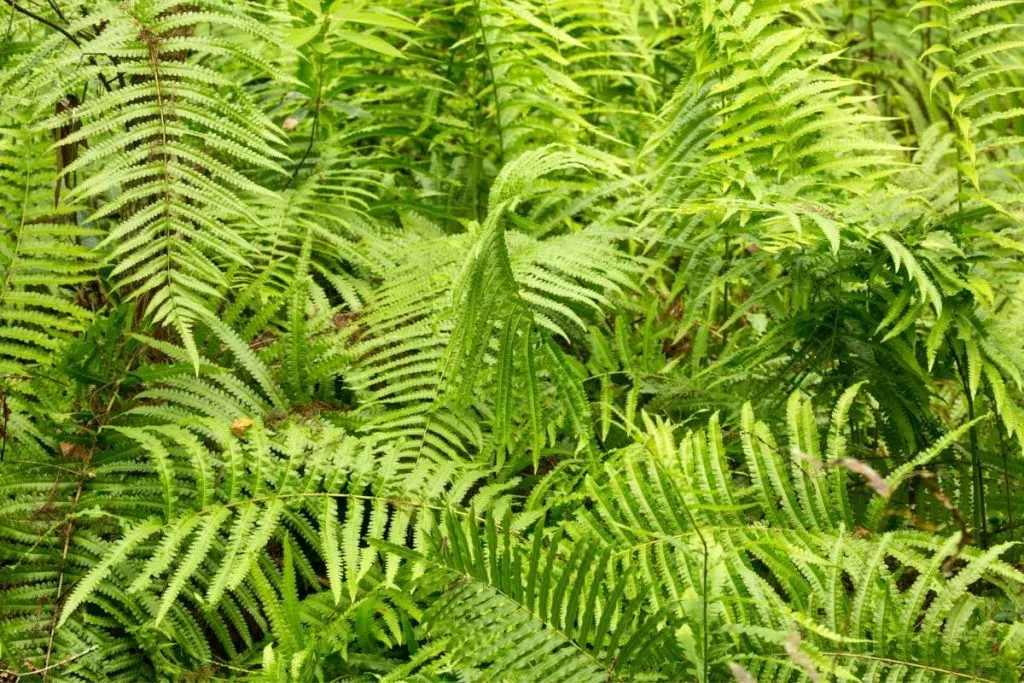
If you enjoy types of ferns indoors such as fluffy ruffle ferns or Japanese fern tree, you’ll love shield ferns too. They are more of an outdoor fern type but perfect for hot climate regions. It makes a great ground cover plant.
Unfortunately, you won’t get any special bright red berries, green fruit, or something creative. Ferns are definitely for people who prefer simple garden decor, but this is a wonderful one. They are very easy to grow and they don’t need much attention.
Light Conditions
The fern can grow in locations that include the sun, shade, and partial shade. These plants are suitable for all growing conditions and this is what makes them extraordinary.
It is best to give them at least 2 hours of direct sunlight in the morning and let them receive mild light the rest of the day.
Water Needs
Watering is not something you need to worry about. Let it be one small drop of water every 8 days. They are also drought-tolerant. However, passing more than 5 days of the watering period means the declining posture of this plant.
Soil Type
Various soils suit them. However, it does not apply to acidic soils. Only peat moss soil, for example, is not good for ferns. Combined with sand or black soil, it’s fine.
Fertilizer
Ferns in general don’t require fertilization.
Pruning And Propagation
You can do pruning when the tips turn yellow. They probably will because ferns and grasses are known for their thin leaves that are easily damaged by the sun. Propagation is done by seeds. Soak them in water for at least 10 hours before planting.
7. Swamp Mallow
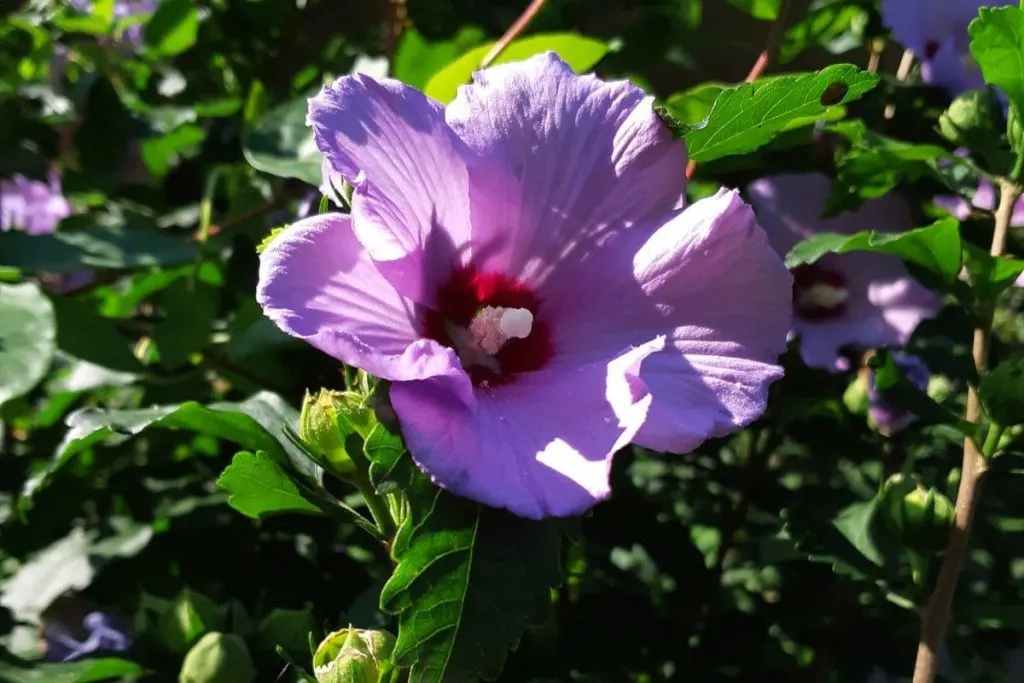
Did you ever have a hibiscus indoor plant? In case you had it, you’ll enjoy a swamp mallow-also known as the swamp hibiscus plant. It’s large deep pink to purple flowers will brighten up your garden in no time.
Who doesn’t love 40- to 50-inch diameter purple flowers? Quite fascinating isn’t it? The flowers are deltoid in shape and although very old, they do not require much attention. It is your new favorite perennial plant.
Light Conditions
If you want it to develop the wonderful big flowers we are talking about, it will need a full sun position. You will see how the sun has a wonderful effect on its flowers and leaves in spring. Cloudy days will lead to a gloomy look for your plant as well.
Water Needs
Watering is very necessary for this plant. Every 7 days, water this plant regularly in the morning. During the flowering period, you can even water every 5-6 days, but in smaller amounts of water.
Soil Type
This plant likes well-drained soil. Usually, people add fertilizer to the start because the plant is a heavy feeder. Perlite soils suit it best.
Fertilizer
Fertilizer can be a regular organic matter for your plants, animal manure, or 15-15-10 fertilizer. You can also apply fertilizers that are high in nitrogen to this plant. It will appreciate sich fertilizers a lot.
Pruning And Propagation
Trimming is not necessary. Propagation is done by seeds in early spring. Soak the seeds in the water at least 24 hours before planting. Keep them in a dry dark room.
8. Marsh Hibiscus
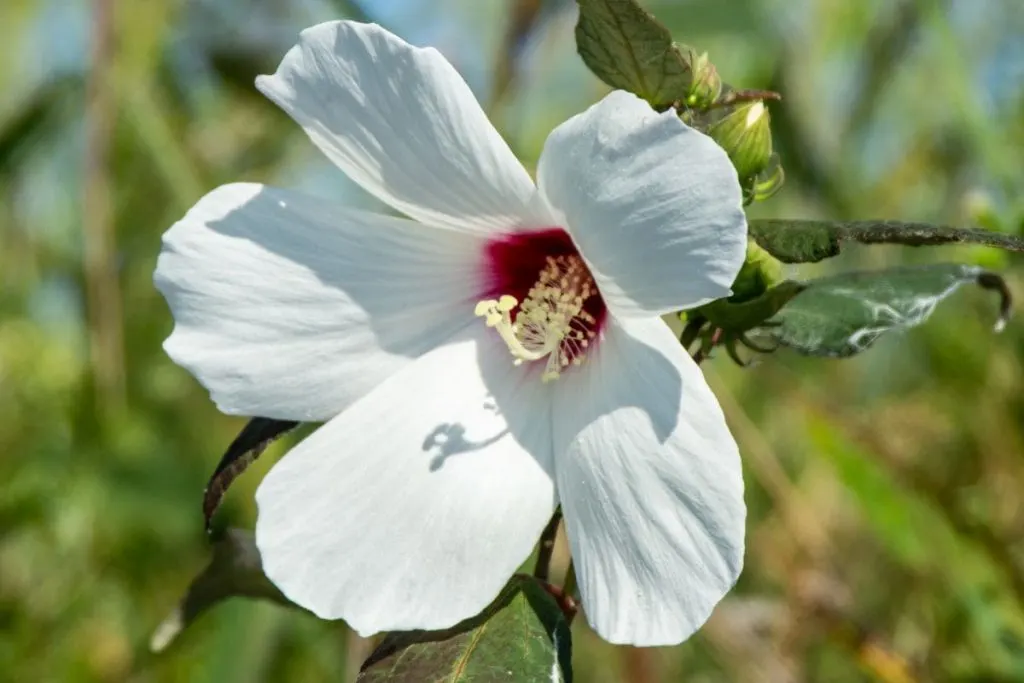
Hibiscus is today the national flower of Korea. Hibiscus is also known as the flower of infinity. In Korea, it presents eternity, the afterlife, and gratitude. However, for you, it might be one of the most beautiful perennials that bloom all summer in your garden.
Marsh hibiscus flowers are usually light pink in color, and due to exposure to the sun, that color can graduate to a slightly darker shade. Among the 200 species of this plant, this plant is considered to be the most special and interesting.
Light Conditions
All hibiscus plants like partial shade in combination with bright indirect light. This plant does not need direct sun to grow successfully. It will not grow successfully even in complete shade.
Water Needs
The watering schedule for this plant is very simple. Every 7-8 days in the morning, water your plant with rainwater or tap water.
Soil Type
Any type of soil except acidic soils is suitable for this plant. The best pH ratio is between 6 and 6.5 pH values.
Fertilizer
Choose organic hummus matter for this plant. You can also use animal manure as well as 10-101-10 fertilizers.
Pruning And Propagation
Pruning is not necessary for this plant. It is best to propagate them by well-preserved seeds in early spring or mid-spring.
9. Coral Honeysuckle
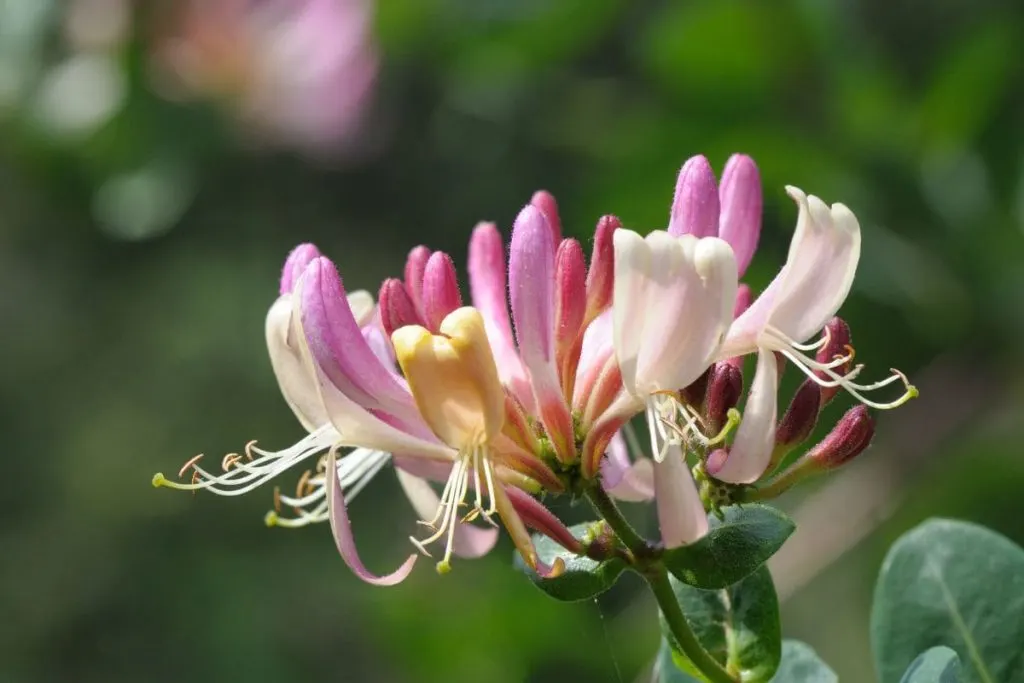
The Honeysuckle flower is one of the aries flowers. Its special symbolism along with its unique look makes it truly a top pick for this zodiac sign. If you want to see it growing in your garden too, do not hesitate.
With such a low effort you put into its care guide, it will grow very fast in your garden. Honeysuckle has the most special pink-white flowers.
All they need is wet soil and partial shade soil to grow perfectly well.
Light Conditions
Coral honeysuckle will grow the best in a partial shade position combined with the morning sun. It will need at least 3 hours of direct sunlight to thrive in this region. They won’t grow in a full shade position so find them a perfect partial sun position before planting.
Water Needs
They are not big fans of water but they are also not drought-tolerant plants. They can be without water for 9-10 days at the most, but after that period of time, you’ll see a difference in their appearance. Don’t wait to spot the difference, just water them after 7 days.
Soil Type
This lovely plant will thrive in almost any type of soil. They are not very picky when it comes to this factor. You can plant them in regular house-plant soil and they will grow perfectly well. However, we advise you to avoid peat moss only since they don’t like much acidic soils.
Fertilizer
You don’t have to fertilize this plant.
Pruning And Propagation
Pruning is done only when you spot damage on your plant. This happens really rarely with this plant so you don’t have to be worried much about this factor.
Propagation is done with the root suckers or with the seeds. It depends on you actually, what you find easier for yourself.
Wrapping Up
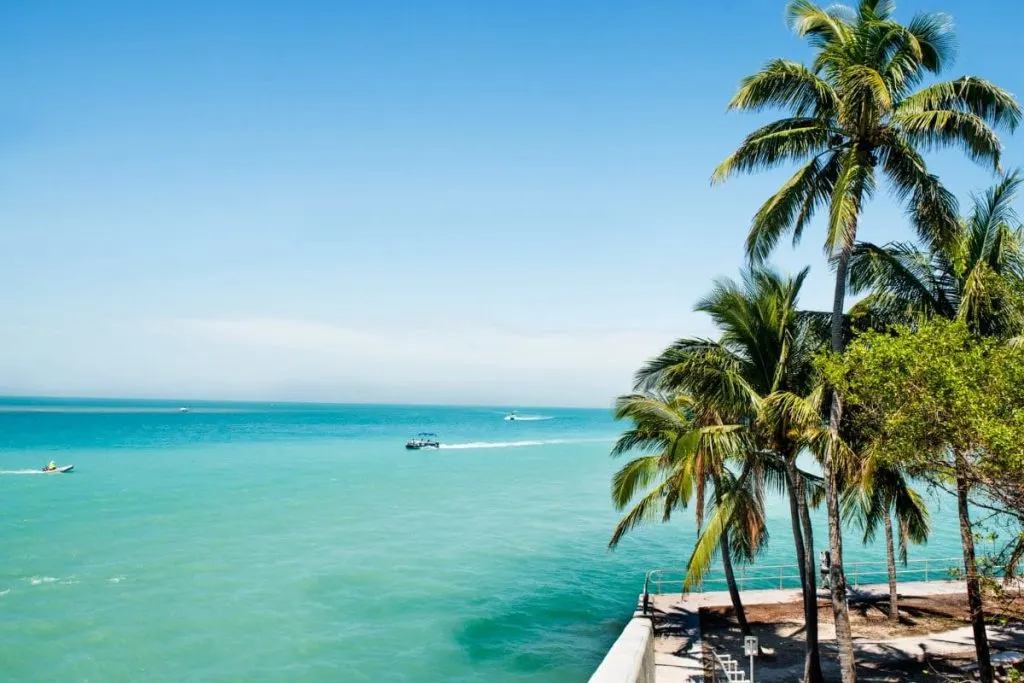
How did you like our article about Florida native plants? I think you already have a perfect position for all the plants we talked about.
Do you have your favorite? Between dark green leaves and vibrant flowers of the right native plants, I’m sure it’s hard to choose.
Well, no matter which one you choose we know they’ll make you happy. You’ll be proud parents of plants in your garden.
We talked about specimen plant, bright green leaves, and bright red flowers and all of them belong to Florida natural habitats.
You can always choose non-native plants too, but they won’t thrive as well as these plants. Their native wildlife is adapted to this region. Check out the southern magnolia, sand pine, southern live oak, and Florida’s state tree too.
Happy planting! That is all for today. See you tomorrow with similar topics.

